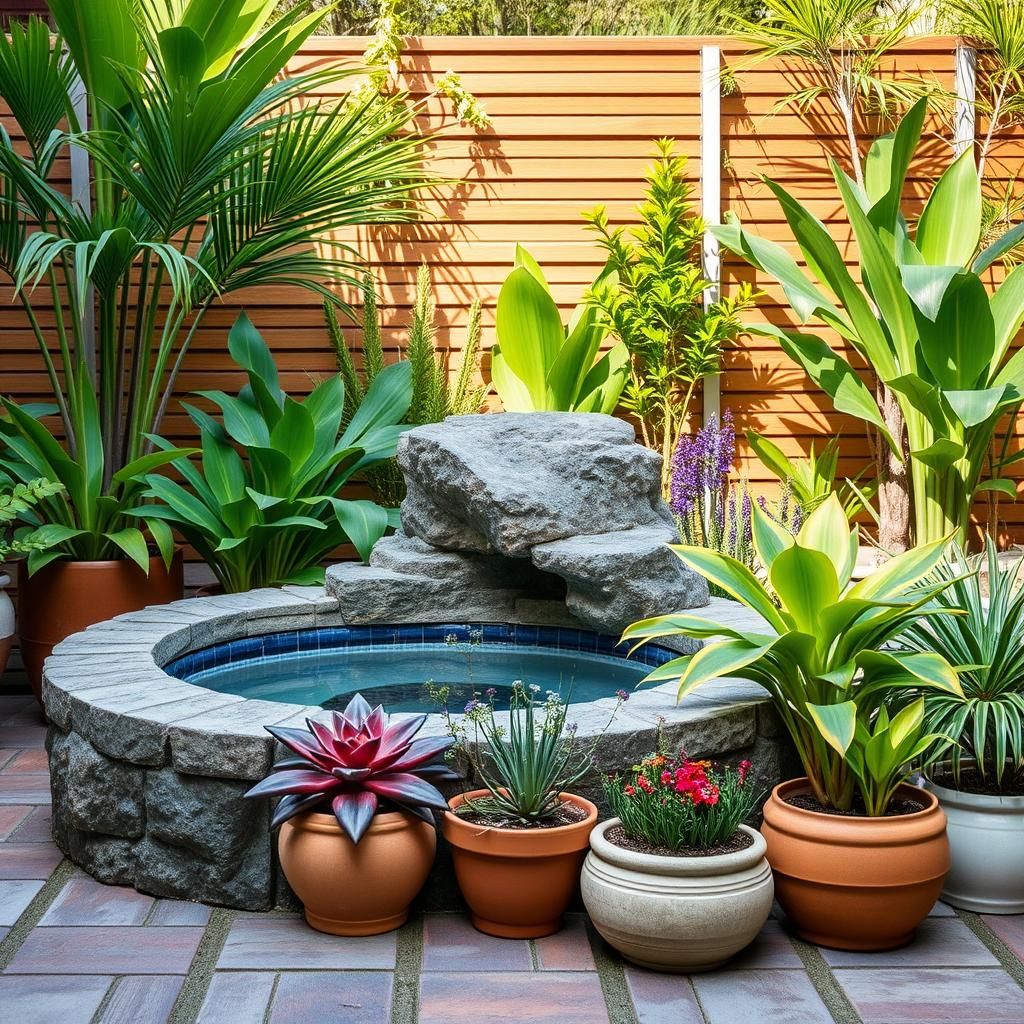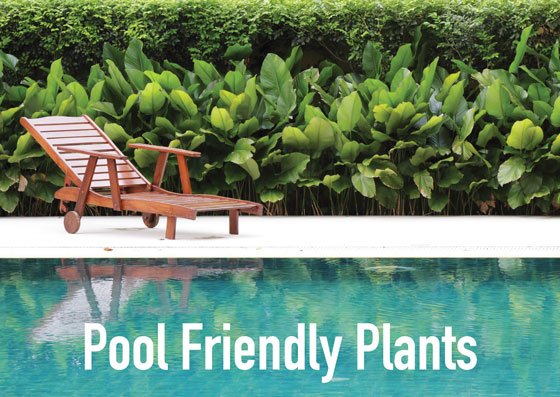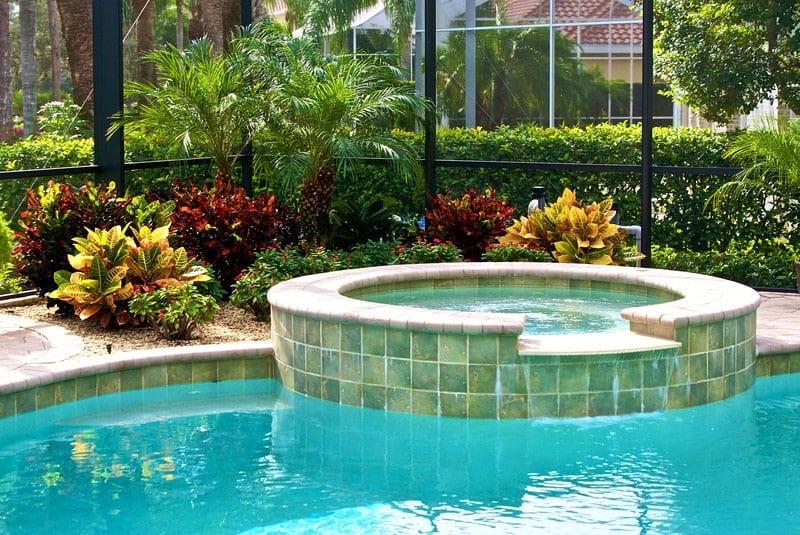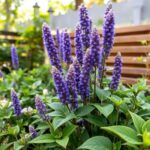The Ultimate Guide to Pool Friendly Plants Queensland for Your Backyard Oasis

Transforming your backyard into a serene oasis often involves more than just the perfect pool. Choosing the right plants can enhance the beauty and functionality of your pool area while ensuring low maintenance and safety. In Queensland's unique climate, selecting pool-friendly plants is essential to create a harmonious environment that thrives amidst humidity and heat. This ultimate guide will explore various plant options that not only complement your poolside aesthetics but also withstand the rigors of the local environment. From vibrant flowers to lush greenery, discover how to cultivate the ideal landscape around your aquatic retreat.
Choosing Pool Friendly Plants for Your Queensland Oasis
When planning your garden in Queensland, selecting pool friendly plants is essential to ensure a beautiful and functional space. These plants should ideally harmonize with the pool environment while minimizing debris, such as leaves and flowers, that can clutter the pool or affect water quality. Opting for native plants can also provide a lower maintenance option due to their natural resilience to local climate conditions. Furthermore, some plants can even contribute to the overall aesthetic appeal of your pool area, enhancing the tranquil atmosphere. Additionally, considering their proximity to the pool will help avoid issues with root systems or overgrowth, allowing for a safe and pleasing recreational environment.
Benefits of Native Plants in Queensland
Native plants offer numerous advantages for pool areas in Queensland. They are specifically adapted to the region's climate, meaning they require less water and care compared to non-native species. Native plants also attract local wildlife, contributing to a vibrant ecosystem around your pool. Furthermore, they help in reducing the need for chemical fertilizers and pesticides, promoting a healthier environment for both the plants and pool water. Overall, incorporating native plants can create a beautiful landscape that complements your pool while providing ecological benefits.
Low Maintenance Options for Poolside Gardens
When selecting plants for a poolside garden, low maintenance options are paramount. Varieties such as ornamental grasses or drought-tolerant succulents thrive without much care and add texture to the landscape. These plants often resist pests and diseases, resulting in fewer headaches for gardeners. Choosing perennials that don’t require frequent pruning will also lessen the upkeep while allowing for a lush appearance year-round.
Managing Debris Around the Pool
To maintain cleanliness and clarity of your pool water, it is crucial to consider plants that produce minimal debris. Plants such as Artillery Plant and Dwarf Hibiscus are excellent choices that provide visual appeal without dropping excessive leaves or flowers. Regular maintenance, such as removing fallen debris promptly, will also contribute to keeping the pool area tidy. Therefore, choose plants that not only beautify the space but also align with your effort to reduce cleaning time.
Creating Shade with Pool Friendly Plants
Creating shaded areas around your pool can enhance comfort and reduce water temperature. Selecting trees or large shrubs that provide ample shade, such as the Bottle Tree or Lemon Myrtle, can help protect swimmers from the harsh Queensland sun. Moreover, strategic placement of these plants can give extra room for lounging areas without compromising on aesthetics. Shade can also help in reducing evaporation rates from the pool, preserving water and lowering chemical use.
Colorful Blooms for a Vibrant Atmosphere
Incorporating colorful blooms around your pool can create a lively atmosphere. Consider plants like Bougainvillea or Cape Honeysuckle, known for their vibrant flowers without leading to significant debris issues. These plants can provide eye-catching displays, attracting attention to your pool area while complementing its landscape. When selecting flowering plants, ensure that the species chosen won’t drop flowers into the water, which can lead to cleaning challenges.
| Plant | Type | Maintenance Level | Debris Production | Attracts Wildlife |
|---|---|---|---|---|
| Artillery Plant | Perennial | Low | Minimal | Yes |
| Dwarf Hibiscus | Shrub | Low | Low | No |
| Bottle Tree | Tree | Low | Minimal | Yes |
| Bougainvillea | Vine | Moderate | Moderate | No |
| Lemon Myrtle | Shrub | Low | Minimal | Yes |
What plants are good around a pool in Australia?

What Plants Are Good Around a Pool in Australia?
In Australia, selecting the right plants for poolside landscaping is essential not only for aesthetic appeal but also for practicality. The ideal plants should thrive in the local climate, provide minimal mess, and enhance the overall environment around the pool. Here are some plants that are particularly well-suited for pools in Australia:
1. Agave
Agave plants are succulent species that require very little maintenance, making them perfect for pool areas. They can tolerate drought and are resistant to pests. Additionally, their architectural forms add a modern touch to the landscape design.
- Low water requirements.
- Minimal upkeep.
- Variety of shapes and sizes.
2. Native Australian Grasses
Native grasses such as Lomandra and Poa are excellent options for poolside planting. These grasses are adapted to the Australian environment, meaning they can withstand the heat and drought. Their soft textures can provide a natural look without the high maintenance associated with traditional lawns.
- Low water consumption.
- Resilient to local conditions.
- Attractive to local wildlife.
3. Frangipani
The Frangipani tree is beloved for its stunning flowers and delightful fragrance. This tropical plant not only provides shade but also brings vibrant color to the pool area. Nonetheless, it's essential to keep it trimmed to avoid excessive leaf fall around the water.
- Beautiful and fragrant flowers.
- Provides shade.
- Low maintenance once established.
4. Bird of Paradise
The Bird of Paradise plant offers dramatic foliage and unique flowers that resemble birds in flight. It thrives in sunny, warm environments, making it an excellent choice for poolside areas where it can bring a touch of the exotic to the landscape.
- Striking appearance.
- Requires full sun.
- Attracts pollinators.
5. Bougainvillea
Bougainvillea is known for its vibrant, colorful bracts and ability to climb on trellises or fences, making it a great choice for vertical landscaping around pools. It is exceptionally hardy and drought-tolerant, making it perfect for hot Australian summers.
See also:
- Grows well in various soils.
- Provides a splash of color.
- Requires little water once established.
What kind of plants to plant around a pool?
:max_bytes(150000):strip_icc()/poolside-plants-that-look-like-paradise-4063955-03-823e26586b8441399253c5453b12fc4a.jpg)
When choosing plants to surround a pool, it’s essential to consider factors such as aesthetics, safety, maintenance, and climate. The right selection of plants can enhance the pool area, provide shade, and create a pleasant atmosphere. Here are some ideal plant types to consider for poolside landscaping:
1. Low-Maintenance Plants
Selecting low-maintenance plants can help ensure that your pool area remains beautiful without requiring excessive upkeep. These plants typically need minimal watering and care, making them perfect for busy homeowners.
- Succulents: They require little water and thrive in sunlight.
- Lavender: Known for its pleasant fragrance and drought-tolerance.
- Ornamental grasses: Create a lush look and don’t need frequent trimming.
2. Non-Shedding Plants
Choosing non-shedding plants is essential to minimize debris in the pool water. Plants that do not shed leaves, flowers, or fruit can help maintain a cleaner pool environment.
- Palm trees: Offer shade without dropping debris.
- Bamboo: Fast-growing and visually appealing with minimal shedding.
- Hibiscus: Produces beautiful flowers without significant litter.
3. Pool-Safe Plants
Some plants can be harmful if ingested, especially for pets and young children. It's important to select pool-safe plants that pose no risk.
- Rubber plant: Non-toxic and adds a tropical aesthetic.
- Ferns: Soft foliage that’s safe and attractive around water.
- Spider plants: Non-toxic and known for their air-purifying qualities.
4. Shade-Providing Plants
In hot climates, it’s advantageous to have shade-providing plants around the pool to create a comfortable lounging area.
- Canopy trees: Provide ample shade and a natural backdrop.
- Flowering bushes: Not only provide shade but also enhance the visual appeal.
- Vines: Can be trained to grow over trellises or arbors for added shade.
5. Fragrant Plants
Including fragrant plants can elevate the ambiance around your pool area. Their aromas can enhance your outdoor experience, especially during summer evenings.
- Jasmine: Has a sweet scent that is relaxing and invites relaxation.
- Mint: Offers a refreshing fragrance and can be used in beverages.
- Rosemary: Provides a pleasant aroma and can be utilized in cooking.
What plants are good for natural swimming pools?

Natural swimming pools rely on a biological filtration system that utilizes plants to help maintain water clarity and quality. These plants not only provide aesthetic appeal but also play a crucial role in balancing the ecosystem. Below is a list of some of the best plants for natural swimming pools.
1. Water Lilies
Water lilies are one of the most popular choices for natural swimming pools due to their beautiful floating leaves and vibrant flowers. They enhance the visual appeal while providing essential cover for aquatic life.
- Temperature Regulation: Water lilies can help regulate water temperature by providing shade.
- Oxygen Production: These plants release oxygen into the water, which is vital for fish survival.
- Algae Control: Their broad leaves shade the water, reducing the growth of unwanted algae.
2. Hornwort
Hornwort is an excellent underwater plant known for its fast growth and ability to absorb excess nutrients. This makes it particularly effective in maintaining water quality.
- Nutrient Absorption: It takes up nutrients that would otherwise promote algae growth.
- Habitat: Provides essential habitat and breeding grounds for aquatic organisms.
- Oxygenation: As a submerged plant, it contributes heavily to oxygenation, supporting fish and other aquatic life.
3. Rushes and Reeds
Rushes and reeds are crucial marginal plants that benefit the ecosystem of a natural swimming pool. They thrive in wet areas, making them ideal for the perimeter of the pool.
- Filtration: Their root systems filter the water, removing pollutants and sediments.
- Biodiversity: They attract various wildlife, creating a vibrant ecosystem.
- Erosion Prevention: Their roots stabilize the soil and prevent erosion along the water's edge.
4. Cattails
Cattails are another fantastic choice for edges and shallow areas of natural swimming pools. They are tall, striking plants that can significantly enhance the area’s aesthetics.
- Natural Filtration: Cattails are effective at filtering pollutants and absorbing excess nutrients.
- Wildlife Habitat: They provide shelter for birds and other wildlife, thus enhancing biodiversity.
- Water Quality: Their ability to take up nutrients helps keep the water crystal clear.
5. Water Mint
Water mint is a fragrant plant that can add a delightful aroma and flavor to the area around your natural swimming pool. It prefers to grow in shallow water.
- Aesthetic Appeal: Its lush green leaves and small flowers add beauty and a refreshing scent to the environment.
- Pest Deterrent: The mint oil can help repel some insects, enhancing the swimming experience.
- Water Quality: It helps improve water conditions by taking up nutrients and promoting overall health.
What plants are good for pool enclosures?


When selecting plants for pool enclosures, it's important to choose varieties that thrive in humid environments, can tolerate the presence of chlorine, and are low maintenance. Here are some ideal options:
1. Hibiscus: This vibrant plant is known for its large, colorful flowers that can brighten up any pool area. It thrives in full sun, which makes it a fantastic option for open pool enclosures.
Benefits of Hibiscus in Pool Enclosures
Adding hibiscus around your pool can offer several benefits:
- Attractive Flowers: Hibiscus blooms come in various colors and sizes, adding visual interest.
- Privacy and Shelter: They can provide a natural barrier, enhancing privacy in your enclosure.
- Pollinator-Friendly: Hibiscus attracts butterflies and hummingbirds, promoting biodiversity.
2. Palm Trees: Various species of palm trees, such as the Canary Island Date Palm or Queen Palm, are excellent for poolside landscaping. They give a tropical feel and are usually resistant to high humidity and salt.
Advantages of Palm Trees Near Pools
Integrating palm trees into your pool area comes with numerous advantages:
- Shade: They provide important shade during hot days.
- Low Maintenance: Once established, palms require little care.
- Wind Resistance: Most palms can withstand strong winds, making them durable options.
3. Ferns: Ferns, such as the Boston Fern or Asparagus Fern, are great for adding greenery without taking up much space. They thrive in shady spots which can be common in pool enclosures.
Ferns as a Natural Option
Ferns can complement your pool enclosure beautifully, offering various advantages:
- Air Quality: They help improve indoor air quality by filtering harmful pollutants.
- Diverse Varieties: There are numerous types to choose from, catering to different aesthetic preferences.
- Cool Microclimate: Ferns can help maintain a cooler environment in humid conditions.
4. Agapanthus: Known for its striking blue or purple flowers, Agapanthus is a perennial that can thrive in the sunny conditions of pool enclosures and offers a lovely accent.
Why Choose Agapanthus Around Pools
This plant is not only ornamental but also has practical benefits:
- Low Water Requirements: Agapanthus is drought-tolerant once established, making it ideal for pool settings.
- Long Blooming Season: They flower from summer to fall, providing consistent color.
- Non-Invasive: Agapanthus will not overtake and clutter your pool area.
5. Lavender: This fragrant herb not only enhances the aroma of your pool area but also provides beautiful purple blooms and is drought-resistant.
Lavender's Role in Pool Enclosures
Incorporating lavender into your pool landscaping can be advantageous in several ways:
- Natural Insect Repellent: Lavender can deter mosquitoes, making your poolside more enjoyable.
- Fragrance: Its pleasant scent enhances the relaxation experience.
- Drought-Tolerant: Lavender thrives with minimal water, perfect for water-conscious gardeners.
Questions from Our Readers
What are pool friendly plants in Queensland?
Pool friendly plants in Queensland are those that thrive in the region's climate while being safe and compatible with pool environments. These plants are typically low-maintenance and have minimal debris, ensuring they do not contribute to pool cleaning issues. Common examples include frangipani, pandanus, and ornamental grasses that add beauty without creating a mess.
Why choose pool friendly plants for my yard?
Choosing pool friendly plants for your yard around the pool area helps maintain a clean and safe swimming environment. These plants typically shed less foliage and produce fewer fruits or flowers that could clog pool filters. Additionally, they are often resistant to common pests, making them more durable in a poolside setting.
Are there any native pool friendly plants in Queensland?
Yes, there are several native pool friendly plants in Queensland, such as the Kangaroo Paw and Grevillea varieties. These plants not only enhance the aesthetic of your outdoor space but also provide benefits like attracting local wildlife and being more resilient to local climatic conditions.
How do I maintain pool friendly plants?
Maintaining pool friendly plants involves regular watering, proper pruning, and ensuring adequate sunlight while avoiding excessive shade from larger trees. It's essential to monitor their growth and make adjustments as needed to prevent any unwanted impact on the pool environment. Using organic fertilizers and pest control methods can help keep these plants healthy and ensure they remain pool friendly.
See also:

If you want to read more articles like The Ultimate Guide to Pool Friendly Plants Queensland for Your Backyard Oasis, we recommend you check out our Landscaping category.
Leave a Reply
Related Articles